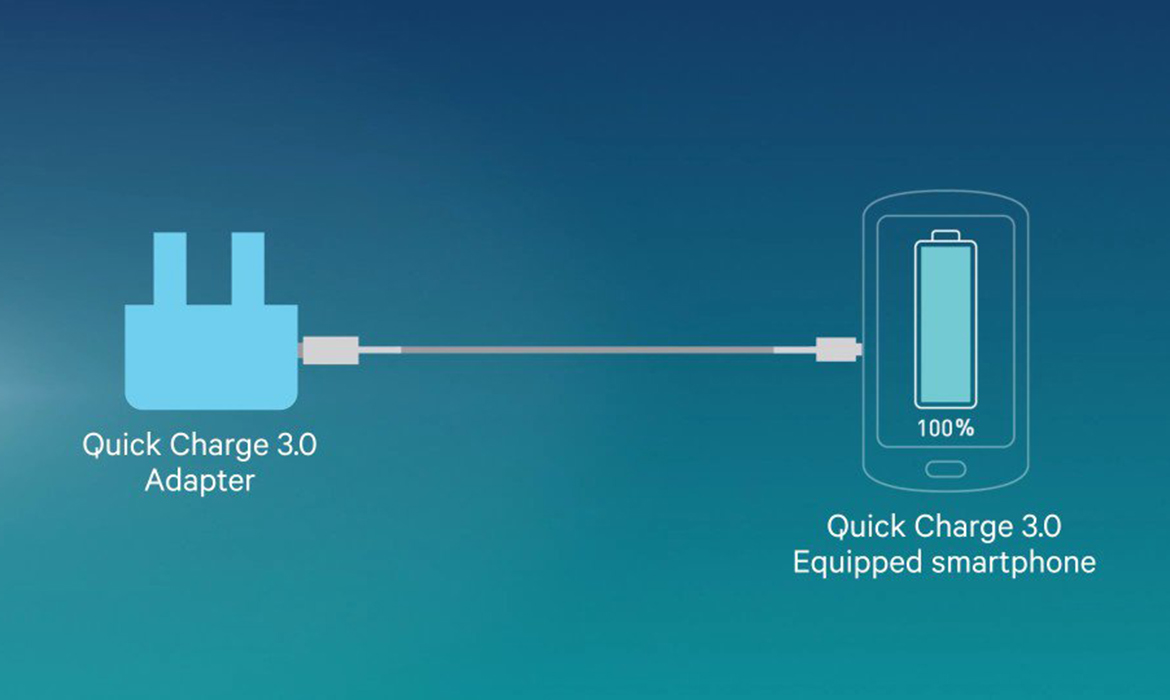What Is Fast Charging?
What Is Fast Charging?

Understanding Fast Charging
The output of a charge is measured in amperage and voltage. Amperage (or current) is the amount of electricity flowing from the battery to the connected device, while voltage is the strength of the electric current. Multiplying volts by amps gives you wattage, the measure of total power.
To make a device charge faster, most manufacturers either boost the amperage or vary the voltage in order to increase the amount of potential energy going to a device. Most fast charging standards dynamically vary the voltage rather than boost the amperage.
Stander USB 3.0 ports output at a level of 5V/1A for smaller devices like wear ables. Most phones and other devices are capable of handling 5V/2.4A. For fast charging, you're looking at something that bumps the voltage up 5V, 9V, 12V, and beyond, or increases amperage to 3A and above.
Keep in mind, your phone will only take in as much power as its charging circuit is designed for. So even if you have it plugged into a 5V/3A adapter, if it's only able to handle 5V/2.4A, that's the rate at which it will charge. For fast charging to work, you need a phone or other device with a charging circuit capable of using one of the fast charging standards, and an adapter and cable enabled for that same standard.
Type of Fast Charging
Qualcomm Quick Charge:
The most common fast charging standard is Qualcomm's Quick Charge because of the widespread nature of the company's chips ets. Quick Charge 2.0 and 3.0 are the two type of fast charging you're most likely to see now, . Each standard is backward compatible with the previous one, so older cables and adapters will still work.
Quick Charge 2.0 bumps up the voltage at intervals of 5V, 9V, and 12V. Quick Charge 3.0 can boost voltage across a broader range, varying dynamically from 3.2V to 20V, though peak power for both standards is 18W.
Quick Charge 4+ narrows the voltage range while pumping up the amperage. You get 5V at between 4.7A to 5.6A, or 9V at 3A. Quick Charge 4+ devices use USB-C ports and are compliant with USB Power Delivery (see the section Beyond Your Phone below). They also have a second power management chip, allowing up to 28W of power without overheating. We haven't tested any Quick Charge 4+ phones yet, but theoretically it allows them to go from zero to 50 percent charged in just 15 minutes.
What About Wireless Fast Charging?
Wireless charging is convenient, but it can be slow. Most wireless chargers that lack fans or cooling systems are limited to fairly slow charging speeds of 5V/1A. But various companies now offer fast wireless charging pads that come with built-in fans to dissipate heat, allowing you to charge at speeds nearly on par with a cable.
Voltage and amperage depend on the charging pad in question. Once again, you'll want to make sure that your phone and your wireless charging pad support the same fast charging standard. Also keep in mind you'll need a wall adapter plugged into the pad that supports fast charging as well (these should come with the pad, but in case you lose them, you can't simply replace them with any old adapter and cable you have lying around).
Beyond Your Phone
For laptops, the situation is a bit different. USB power delivering isn't so much fast charging as it is a standard that determines if an adapter or portable power bank is capable of charging a laptop or other high-powered device. With USB-C input/output ports becoming more prevalent, it's now possible for adapters and portable power banks to charge demanding devices that require an output of 18W or more. The Power Delivery spec allows a device to be charged at a maximum current of 5A or 100W.
The newer Power Delivery 2.0 is better able to adjust voltage and amperage configurations, to supply power at different intervals depending on the needs of the device. A smartphone would get 5V/2.4A, while a laptop might get 20V/5A to achieve a sufficiently high wattage (100W). USB PD 3.0 adds more enhancements for power delivery, with outputs at 7.5W, 15W, 27W, and 45W, each with its own voltage and amperage configurations.




